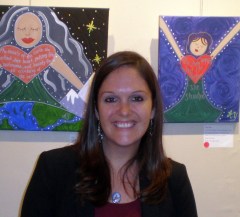As we feminists struggle to elevate Mary and Guadalupe, we sometimes forget that speaking of birth and gestation is not always empowering or even essential to womanhood.
It is early morning on the Hill of Tepeyak on December 9, 1531 when a wondering peasant named Juan Diego first caught a glimpse of her presence. Diego sees a vision of a teenage girl surrounded by light; the young girl asks that a church be built on the hill in her honor. After hearing her speak and seeing the light emanating from her presence, Diego recognizes her as the Virgin Mary. He rushes to the Spanish archbishop who insists on a sign as proof of Diego’s vision. The young girl instructs Diego to gather flowers from the top of the hill, even though it is past their growing season. Upon climbing to the top of the Hill of Tepeyak, Diego discovers Castilian roses—a beautiful flower otherwise unheard of in Mexico—which the glowing young woman arranges in his cloak. When Diego returns to the archbishop, he opens his cloak to reveal the miraculous flowers and they fall to floor; in their place was an image imprinted on the fabric of his cloak. It was the image of Our Lady of Guadalupe.
Guadalupe is one of Mexico’s most popular religious and cultural images and her icon, now on display at the Basilica of Our Lady of Guadalupe, is one of the most visited Marian shrines in the entire world. On December 12, countless Christians—particularly Catholics—celebrate her feast day. Her feast day occurs within the four week celebration of Advent, which is the period of waiting, expectancy, and gestation before the birth of Jesus at Christmas. Continue reading “Painting Guadalupe and Mary by Angela Yarber”








